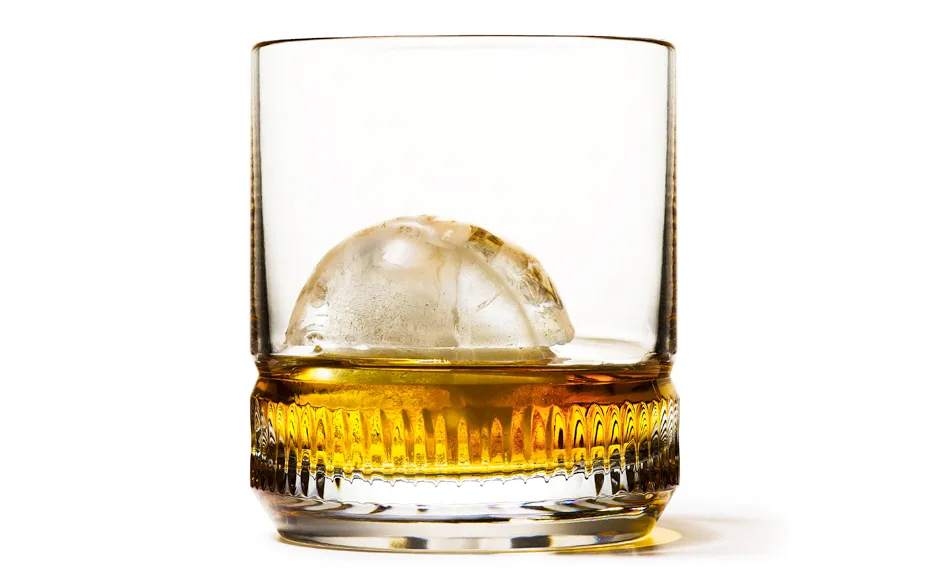In the world of beverages, few terms are as evocative and instantly recognizable as “on the rocks.” While its meaning might seem straightforward to those familiar with bar lingo, the phrase carries layers of history, culture, and culinary art that extend far beyond its simple three-word composition. This exploration delves into the essence of what it means to enjoy a drink “on the rocks,” tracing its origins, its application in modern mixology, and its symbolic presence in wider cultural conversations.
The Literal Meaning
At its most basic, “on the rocks” refers to the serving of a spirit or cocktail poured over ice cubes. The ice, or “rocks,” chills the drink, subtly diluting it as the ice melts, making for a smoother, often more palatable experience. This method is particularly favored for high-quality spirits, where the cold temperature can enhance certain flavors while muting the harshness of alcohol.
Origins of the Term
The history of serving drinks over ice is a fascinating journey that mirrors the evolution of culinary and social practices. The term itself is believed to have originated from the days when ice was a luxury item, harvested from frozen lakes and rivers during winter and stored in ice houses for use throughout the year. As ice became more accessible with the advent of refrigeration technology, serving drinks over ice cubes became a symbol of sophistication and luxury.
Beyond the Bar – Other Uses of “On the Rocks”
While “on the rocks” is most commonly associated with the serving of alcoholic beverages, its usage permeates other areas of culture and language. In film, literature, and everyday speech, “on the rocks” can denote a state of distress or difficulty, particularly in reference to relationships or business endeavors. This metaphorical use underscores the phrase’s versatility and its ability to convey complex situations with a touch of humor or seriousness.
The Art of Drinking On the Rocks
Not all drinks are suited to being served on the rocks, but for those that are, the choice of spirit and the type of ice can significantly affect the drinking experience. Whiskey, scotch, and bourbon are traditional favorites, with the coldness of the ice complementing their rich, complex flavors. The size and shape of the ice cubes also play a role; larger cubes or spheres melt slower, reducing dilution and preserving the drink’s integrity longer.
Variations and Trends
The world of mixology is ever-evolving, and the concept of “on the rocks” has seen its fair share of innovation. Artisanal ice, characterized by its clarity, density, and customized shapes, has become a hallmark of high-end bars and restaurants. These bespoke ice creations offer not just aesthetic appeal but also practical benefits, such as slower melting rates and minimal dilution. Additionally, the trend extends to non-alcoholic beverages, with mocktails and artisanal sodas increasingly enjoyed on the rocks, catering to a growing demand for sophisticated, non-alcoholic options.
The Global Perspective
The practice of serving drinks on the rocks varies widely around the globe, influenced by local customs, climates, and tastes. In some countries, the preference might lean towards minimal ice, while in others, glasses filled to the brim with ice are the norm. These variations offer a glimpse into the cultural significance of the term, revealing how a simple method of serving drinks can reflect broader societal preferences and traditions.
Popular On the Rocks Cocktails
Discover a range of beloved cocktails best enjoyed on the rocks, each offering unique flavors and experiences. From the vibrant Tequila Sunrise, combining tequila, orange juice, and grenadine, to the bold Long Island Iced Tea, a mix of several spirits topped with cola. The Negroni offers a balance of gin, Campari, and sweet vermouth, while the Highball combines whiskey and ginger ale for a refreshing taste.
Ordering and Serving Tips
When ordering your drink on the rocks, specifying your ice preference can enhance your experience, from asking for lots of ice to a single large cube. Serving tips include ensuring the drink is served promptly to avoid over-dilution and selecting the correct glassware to enhance the drinking experience. Not all drinks are suited for the rocks; high-quality spirits might be better enjoyed neat, while others, like martinis, typically aren’t served with ice.
Bartending Insights
For those looking to refine their bartending skills, understanding how to properly serve drinks on the rocks is key. This includes not letting the liquor sit too long with ice, choosing the correct glassware, and knowing which drinks are best served on the rocks. The choice of ice is also crucial; large cubes dilute slowly, preserving the drink’s flavor for longer.
Contemporary On the Rocks Variations
The Moscow Mule, Old Fashioned, Mint Julep, Rickey, Gin Bramble, Hugo, and Tequila Sunrise represent a spectrum of tastes and styles for on the rocks cocktails. Each cocktail has its own set of ingredients and history, offering something for everyone. From the simple elegance of a Moscow Mule to the refreshing Hugo, these drinks illustrate the versatility and appeal of on the rocks cocktails.

